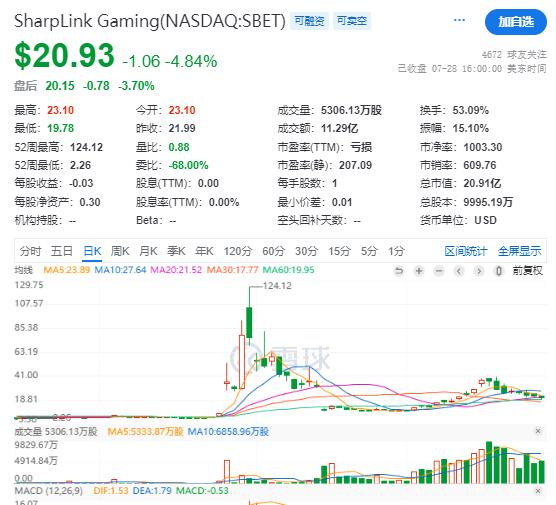Ethereum co-founder Joe Lubin shared in an interview this morning on 7/29 why ETH is used as a core asset for enterprise reserve allocation. He stated that ETH is not only more suitable as an enterprise reserve asset than BTC, but can also be staked, participate in DeFi, and bring substantial revenue to company assets.
Table of Contents
ToggleBTC vs ETH: Which Enterprise Reserve Strategy Should Be Chosen?
Since MicroStrategy introduced the Bitcoin (BTC) enterprise reserve strategy, many companies have followed suit. Now, Ethereum-based reserve enterprises are also emerging, with the most well-known being the ETH reserve enterprise led by Ethereum co-founder Joe Lubin and the US online gaming company SharpLink Gaming.
Lubin first stated that MicroStrategy founder Michael Saylor was indeed successful in the BTC reserve strategy, but ETH is a more promising reserve asset. He pointed out:
"ETH itself is a productive asset that can generate revenue. At SharpLink, we are constantly finding ways to raise more funds, buy more ETH, then stake and participate in DeFi to earn returns."
He emphasized that this approach can quickly increase the amount of ETH held per share, faster than BTC reserve enterprises, and this is not limited to SharpLink, but also includes companies like Bitmine and Bit Digital, which have been buying large amounts of ETH in July.

He finally stated that as long as blockchain projects have scalability, low transaction costs, good user experience, and regulatory support, the entire industry has the opportunity to achieve comprehensive profitability.
Risk Warning
Cryptocurrency investment carries high risks, and its price may fluctuate dramatically. You may lose all of your principal. Please carefully assess the risks.
BTC has risen by over 27% this year. However, most crypto liquid funds have not only failed to outperform the market but have also experienced significant losses and forced closures. Joe McCann's Asymmetric fund's half-year loss of millions of dollars is the best example, raising questions like: "How can you lose money even in a bull market?"
Table of Contents
ToggleAnalyzing Asymmetric's 80% Half-Year Loss: High Leverage and High Exposure
(The rest of the translation follows the same principles)Current agreements need to be truly profitable, with specific business models, actual revenue, user scale, and profit-sharing or incentive mechanisms to gain favor.
Dragonfly partner Rob Hadick added: "The fund's 'risk control capability' has become a key decisive factor in this cycle. Besides selection, timely entry and exit and flexible allocation are the only ways to survive in a highly volatile market."
The Next Stop for Liquidity Funds: More Sensitive and Decisive
This Bull market can be said to be quite challenging for liquidity funds, with various data revealing the strategic failure and operational challenges faced by active funds.
As the market gradually shifts from speculation to fundamentals, future winning funds will no longer rely solely on risk appetite and high-leverage bets, but will return to the real skills of token selection, risk management, and liquidity allocation.
Risk Warning
Cryptocurrency investment carries high risks, and prices may fluctuate dramatically. You may lose all your principal. Please carefully assess the risks.







